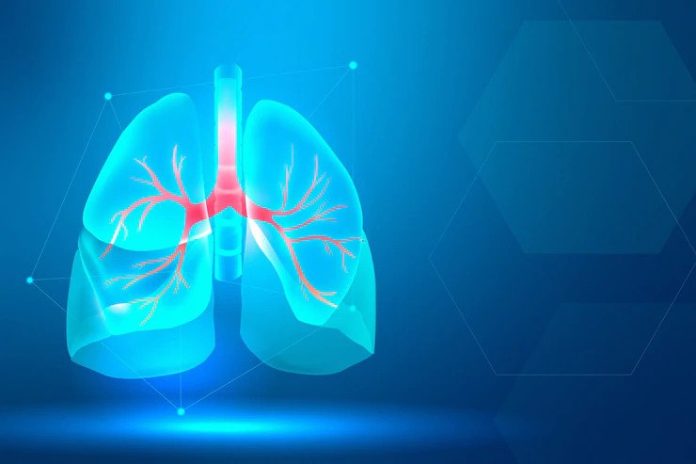What is a Pulmonary Oedema?
Pulmonary oedema is an affliction of the lungs caused by an excess of fluid there. The numerous air sacs in the lungs become clogged with this fluid, making breathing challenging. Heart issues are usually the root cause of pulmonary edema. But there are other causes for fluid to build up in the lungs. These include pneumonia, exposure to specific chemicals, and drugs, chest wall injuries, and visiting or exercising at high altitudes.
Acute pulmonary oedema occurs suddenly and is a medical emergency requiring prompt attention. In case of delayed treatment, pulmonary oedema can result in death. Depending on the cause, pulmonary oedema is usually treated with medicine and oxygen. There are several best lung specialist in Mumbai and various parts of India who can be consulted for treatment.
What are the signs and symptoms of pulmonary oedema?
When your body has trouble taking in oxygen due to an increase in fluid in the primary bloodstream, it is the first sign of pulmonary oedema. But if treatment is delayed, the symptoms could worsen. High-altitude pulmonary oedema can happen if you’re at a high altitude or climbing a mountain quickly since oxygen levels are lower at higher altitudes. It is a severe form of altitude sickness (sometimes referred to as mountain sickness).
High-altitude pulmonary oedema can leave you feeling weak, exhausted, achy, and out of breath. Chest discomfort and coughing are possible effects. High-altitude pulmonary oedema is a medical emergency that may endanger life. If you face this condition, you should quickly go down and seek immediate treatment.
Several pulmonary oedema symptoms depend on them.
Symptoms of Chronic pulmonary oedema
- Breathlessness brought on by muscular exertion
- Breathing problems when lying down
- Feeling of being out of breath
- Leg weight rapidly rising
- Fatigue
- Rise in body weight in the lower half
Symptoms of Pulmonary oedema at high altitude
- Headache
- Breathlessness
- Fever
- Irregular or fast heartbeat
What are the causes of pulmonary oedema?
The most common cause of pulmonary oedema is congestive heart failure, which mostly appears as pressure on the lungs and small blood arteries due to the heart’s inability to pump and transport blood throughout the body. As a result, fluid starts to seep from the lungs and blood vessels.
Other medical conditions include lung damage, a blood infection, high blood pressure, kidney failure, and pneumonia. External factors that increase pressure on the heart and lungs can potentially induce pulmonary oedema. Trauma, serious injury, lung damage brought on by toxin inhalation, high altitude exposure, and drug abuse all contribute to this condition.
What medical treatments are used to treat pulmonary oedema?
Depending on the underlying cause, the course of treatment varies.
For example, managing pulmonary oedema brought on by heart failure strives to keep the heart stable. Antibiotics are used to fight the infection to treat bacterial pneumonia-related pulmonary oedema. The symptoms of pulmonary oedema may also be treated according to your doctor’s recommendations. Treatment options include:
- Using a mask to receive additional oxygen, CPP to promote breathing, and diuretics to get rid of extra fluid
- Inotropes to help your heart pump more efficiently
- ACE inhibitors for blood pressure control
- If alternative treatments fail to improve breathing, you may be able to regulate your breathing ventilator by taking morphine to alleviate anxiety.
What are pulmonary oedema treatment options?
Pulmonary oedema may not be prevented depending on the underlying reason. However, the following steps can help avoid cardiogenic pulmonary oedema by lowering your risk of heart disease:
- Reducing salt intake or consuming a moderate quantity,
- Exercising frequently if you can,
- Maintaining a healthy weight,
- Eating a diet low in cholesterol,
- Avoiding alcohol or drinking it in moderation,
- Stop smoking
Maintaining your pulmonary oedema treatment regimen may also lower the chance of recurrence.
How is pulmonary oedema diagnosed?
The amount of fluid in the blood will be measured, and the symptoms that lead to pulmonary edema will be analyzed. The doctor will perform an essential physical examination using a stethoscope to listen for the following signs: rapid breathing, increased heart rate, abnormal heart sound, and increased heart rate. If there are any symptoms, they will also be discussed with the patient’s medical history.
The doctors will suggest the following tests:
- Chest X-ray
- Complete blood count
- Echocardiography or ultrasound to look for abnormal heart activity
- ECG and blood test to determine the blood’s oxygen content
Conclusion
Pulmonary oedema is a potentially dangerous condition that results when fluid accumulates inside the lungs. Heart disease can cause cardiogenic pulmonary oedema, and lung injury leads to noncardiogenic pulmonary oedema.
Symptoms of pulmonary oedema include sweating, swelling, and breathing issues. It may also result in frothy pink mucus from the lips and nose. Medicines, oxygen, and continuous positive airway pressure are all different forms of treatment. Consult the best lung specialists in Mumbai or at your preferred location if you have concerns about pulmonary edema.
Read more health blogs about parkinson treatment.
Choosing a Haematologist – What they do & Why You Might Need One?


